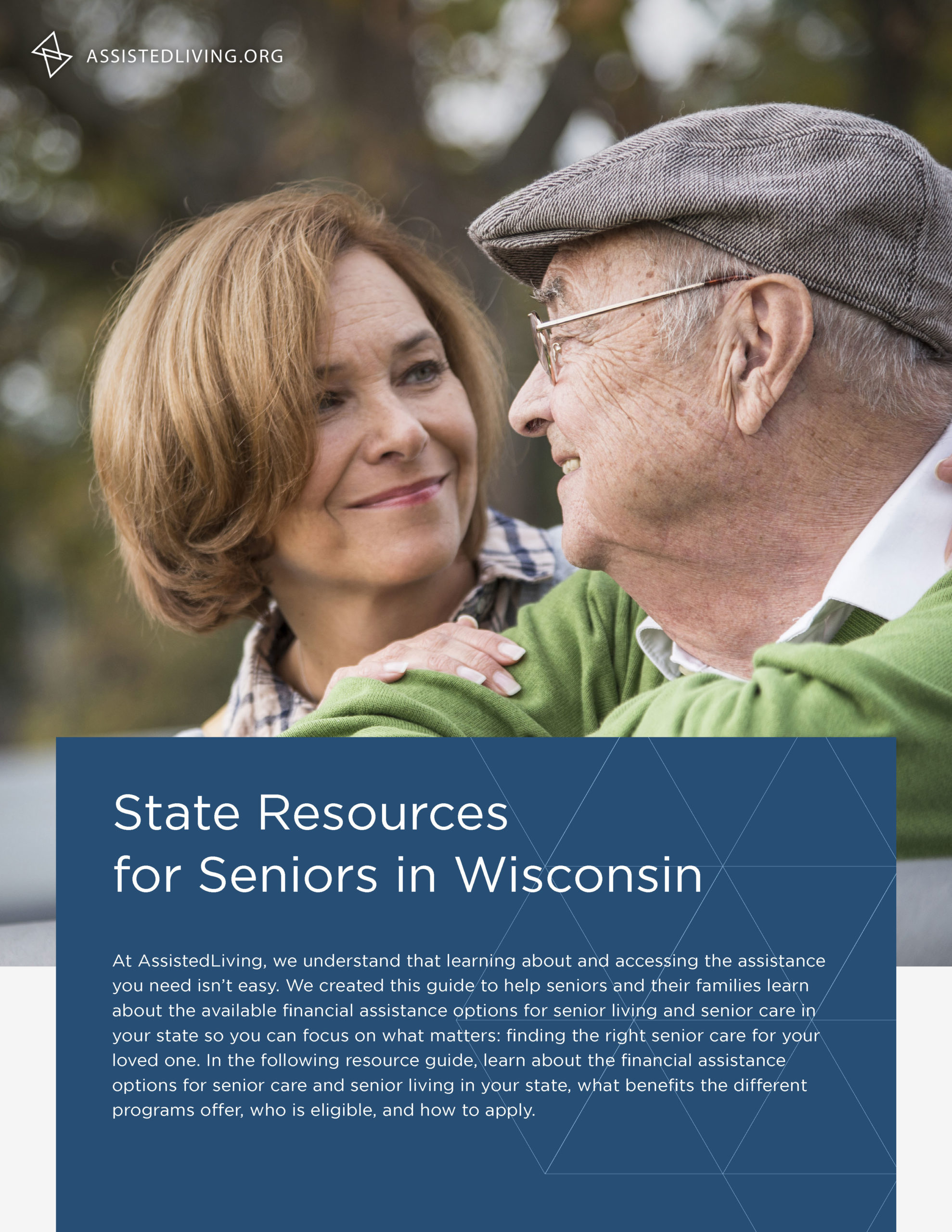Find Assisted Living in Your Area
Nutritious eating is important for people of all ages, but it’s especially vital for older adults who want to stay as healthy as possible in their golden years. Eating well has a number of compelling benefits for seniors, including stronger bones, improved digestive system function and the ability to reach and maintain an ideal body weight. As an added bonus, a nutrient-packed diet may help you live longer, thanks to a lowered risk of heart disease, diabetes, cancer and other chronic conditions.
In this guide, you’ll learn about the nutritional challenges many seniors face and find tips for planning a healthy diet, with specific advice for seniors who prefer vegan meals. You’ll also learn how senior living facilities accommodate residents with special dietary requirements, plus safety tips for handling food that can help keep you from getting sick.
Senior Nutrition Needs and Challenges
Older adults face a variety of unique challenges when it comes to getting the nutrition they need. These include:
- Waning appetite: As they age, many seniors don’t feel as hungry as they did in their younger years. This can make it hard to get enough calories and nutrients, putting you at risk of weight loss and malnutrition.
- Health conditions: People who have certain health conditions, such as high blood pressure, diabetes or celiac disease, require modified diets that may need to be low in salt, sugar, gluten or fat. Eating an improperly balanced diet could lead to further complications or make a health condition worse. Some seniors may also find it difficult to chew and swallow certain foods, which limits what they’re able to safely eat.
- Loss of taste and smell: Older adults may experience a decreased sense of taste and smell, which can cause food to seem bland and unappealing. When food doesn’t taste like it used to, you might feel like eating less. You may also be tempted to add more salt to improve the flavor, but that may not be healthy if your body needs a low-sodium diet. In addition to normal aging, there are a number of conditions that can cause these senses to fade, such as Alzheimer’s or Parkinson’s disease. Certain medications, including those for blood pressure, bladder control, high cholesterol and depression, can change the way food tastes. Cancer treatments may also affect your ability to smell and taste food.
- Decreased activity levels: Maintaining an active lifestyle can be difficult for older adults. Seniors who have a sedentary lifestyle burn fewer calories, which could cause weight gain if they eat more food than their body requires. A lack of activity can also lead to other health problems, including weaker bones, loss of muscle strength, inflammation and chronic diseases.
- Difficulty cooking: When you have chronic pain or issues with mobility, you may have trouble moving around the kitchen to prepare healthy meals for yourself. If you live alone and don’t have a caregiver who can help with cooking, you may have problems getting enough to eat.
- Food insecurity: According to Feeding America, in 2020, roughly 5.2 million seniors (1 in 15) faced hunger due to food insecurity. Seniors with limited incomes may not have enough money to buy the food they need. The SNAP program is designed to help low-income people afford food, but according to the National Council on Aging, only 48% of seniors who are eligible for the program are enrolled.
Despite these challenges, there are several ways to ensure that you get the calories and nutrition your body needs.
Nutrition Tips for Older Adults

For some seniors, figuring out what they should eat, and how much, can feel a little overwhelming. Below are several tips that can help you get the nutrition your body requires.
Talk to Your Doctor
Your doctor knows your medical history and health conditions, so they’re an excellent source of information if you have questions about your dietary needs. They can also run a simple blood test to determine if you’re deficient in specific vitamins or nutrients. If you are, you may be directed to adjust your diet or take a supplement if you’re unable to get what your body needs through food alone.
Create a Meal Plan That Works for You
Your nutrition and calorie needs are based on many factors, such as your age, weight, height and activity level. If you’re not sure how many calories you need on a daily basis, you could be eating too little or too much. The USDA’s MyPlate Plan offers personalized suggestions on how much of each food group you should ideally eat per day. In general, the average senior’s diet should include:
- A variety of vegetables, such as carrots, beets, beans and leafy greens.
- A variety of whole fruits, including citrus fruits, bananas and nutrient-packed berries.
- Low-fat milk, cheese, yogurt and other dairy products. If you prefer to avoid cow’s milk, consider almond, soy or oat milk as an alternative.
- Protein-rich foods, such as lean meat, fish and eggs.
- Whole grains, including whole wheat bread, oatmeal and brown rice.
Understand the Nutrition Facts Label
In the United States, all packaged foods and beverages feature a Nutrition Facts label to help consumers make informed buying choices. This label includes information about serving sizes and the amount of calories, fat, sodium and nutrients per serving.
Make sure to check food labels while you grocery shop. Look for foods that are high in:
- Calcium, which supports bone health, blood clotting, hormone secretion and nerve function.
- Dietary fiber, which speeds up the movement of food through your digestive system.
- Potassium for muscle, heart and nervous system support.
- Vitamin D, which helps prevent osteoporosis and supports healthy blood pressure levels.
- Iron, which helps protect your body from infections and anemia.
Avoid foods that are high in sodium, added sugars and saturated fats, such as fried items, baked goods and many items in the snack aisle. Eating too much saturated fat can lead to heart disease and weight gain, according to MedlinePlus.
Make Smart Food Swaps
By making some simple changes to your diet, you can cut calories and add nutrition without sacrificing taste. Some options include:
- Drink unsweetened seltzer or sparkling water instead of soda. These beverages usually have zero or low calories and are sugar-free.
- Use oat, soy or almond milk in your coffee instead of high-calorie creamer.
- Eat fresh instead of dried fruits, which tend to be high in sugar.
- Choose plain popcorn over potato chips, cheese curls, pretzels and other salty snacks.
- Try Greek yogurt, which contains more protein, less sugar and fewer calories than other varieties.
- Opt for thin-crust over hand-tossed pizza to cut calories nearly in half.
Drink Plenty of Fluids
Water is essential to almost every bodily function, yet older adults can experience a diminished sense of thirst, which means some seniors may not be drinking enough. If your urine appears pale yellow, you’re probably getting enough water. If it’s dark in color, you might be dehydrated. This can cause health problems such as kidney failure, heat stroke and urinary tract infections.
To increase your fluid intake, make sure to keep water within reach wherever you are. Also consider eating foods with a high water content, such as low-sodium soup, watermelon, celery, cucumbers and tomatoes.
Stay Physically Active
If you don’t feel hungry often, try sticking to a regular exercise schedule. Working out may increase your appetite and make you feel like eating more. Good exercise options for seniors include:
- Weightlifting and resistance band training, which can improve your strength and muscle tone.
- Aerobic activities such as walking, jogging, swimming, dancing and biking.
- Stretching to help you stay flexible and limber.
- Balance exercises, which can help prevent falls.
Shop for Healthy Prepared Foods
If you have difficulty preparing and cooking meals for yourself, shop for healthy prepared foods. You can find a variety of precut fruits and vegetables in the produce section of many grocery stores, which can be helpful if you struggle with hand pain, arthritis or joint problems. Stores also commonly stock meal kits that contain everything you need for a nutritious lunch or dinner in one convenient package.
Microwave frozen meals can be a good option, but many are very high in calories, sodium and saturated fat. To choose healthy frozen meals, look for products that contain:
- 300-500 calories
- Less than 600 milligrams of sodium
- Less than 4 grams of saturated fat
- 10-18 grams of total fat
- 10-20 grams of protein
At least 10% of the recommended daily value for vitamins and minerals
Nutrition Tips for Vegan Seniors
According to a 2018 Gallup poll, approximately 3% of adults aged 50 to 64 identify as vegan, and 2% of seniors over the age of 65 say the same. Compared to a lacto-ovo vegetarian diet, which allows dairy products and eggs, a vegan diet doesn’t include any animal products. While a plant-based diet offers many benefits, such as a lower risk of obesity, cancer, heart disease and diabetes, you have several unique dietary needs to consider as a vegan, so be sure to:
- Eat plenty of protein: Protein is largely found in meat, seafood and eggs. Vegan-friendly protein options include chickpeas, lentils, nut butters, quinoa and tofu. Vegetables such as broccoli, sweet potatoes, artichokes and spinach are also fairly high in protein.
- Take a B12 supplement: Vitamin B12 is used by the body to make red blood cells. Naturally, it’s only found in animal products, so you’ll need to take a B12 supplement to ensure you’re getting enough of this important vitamin. Other sources include fortified cereals and nutritional yeast, which has a cheesy flavor and makes a good topping for mashed potatoes, pasta and popcorn.
- Look for non-dairy calcium sources: Milk, cheese and other dairy products are packed with calcium, which your body needs for strong bones. If you’ve sworn off dairy, you can get your calcium through a wide variety of plant-based sources. For example, you’ll find 179 milligrams of calcium in just 2 tablespoons of chia seeds, 100 milligrams per cup of broccoli rabe and 385 milligrams in 1 cup of almonds. Fortified non-dairy milks are another option, as well as vegetables such as sweet potatoes, okra, mustard greens and kale.
- Get enough vitamin D: According to one study, advancing age is a risk factor for vitamin D deficiency. A lack of this vitamin can contribute to osteoporosis, hip fractures, heart disease and a host of other conditions that commonly affect older adults. Except for mushrooms, most plants don’t contain a significant amount of vitamin D. Fortified cereals and plant-based milks are good choices. Natural sunlight is another great source of vitamin D, and being outside for 10 to 30 minutes per day at least three times per week is enough for most people.
- Talk to a dietitian: If you’re not sure how to eat vegan while still getting all the nutrients you need, consider booking a consultation with a dietitian. These experts can assess your diet and point out any areas where you might be vitamin-deficient. If you’re thinking about transitioning to a vegan diet, they can help you decide whether it’s right for you.
Special Diets in Long-Term Care Facilities

If you’re considering moving into a senior living facility and have special dietary needs, you may have questions about what you’ll be able to eat there. Fortunately, most facilities are able to accommodate special diets to support people with a variety of health conditions.
Typically, meals at care facilities are thoughtfully planned by a qualified dietitian or other nutrition professional. At facilities that accept Medicare and/or Medicaid, meals are legally required to meet the nutritional needs of residents based on national guidelines. Facilities should also make a reasonable attempt to meet cultural, ethnic and religious dietary requests.
Special diet offerings vary by facility, but below are some of the most common, along with a sample of what each menu may include.
|
Diet Type |
Who It’s For |
Description |
|
Diabetic people with hyperglycemia or hypoglycemia |
|
|
|
People with chronic kidney disease or limited kidney function |
|
|
|
People with celiac disease, gluten sensitivity or wheat allergies |
|
|
|
People who have trouble chewing and swallowing |
Diet includes four levels of foods depending on severity:
|
|
|
People with high cholesterol and disorders of the pancreas, liver or gallbladder |
|
|
|
People who prefer plant-based diets for health or personal reasons |
The vegetarian umbrella covers a variety of dietary preferences, including:
All vegetarian diets may be supplemented with vitamin D, B12, multivitamins and fortified cereals to ensure nutritional needs are met. |
|
|
People following Jewish dietary law |
|
|
|
People with Alzheimer’s, dementia and other forms of cognitive impairment |
Includes foods that are easy to eat without a knife and fork, such as cheese cubes, pre-cut fruits and vegetables, large pasta shapes and sandwiches |
Before you choose a senior living community, it’s important to make sure that the facility can accommodate your dietary preferences and needs. Some questions to ask include:
- Who handles food preparation and cooking at the facility?
- Can you accommodate my specific dietary needs?
- Do you allow ingredient substitutions?
- Do residents help with menu planning?
- Do residents have access to the kitchen?
- How often are meals served?
- Are snacks provided between meals?
- Can I request smaller or larger portions?
If You Need Help Feeding Yourself
Most senior living facilities offer feeding assistance for residents who have some difficulty eating and drinking on their own. Trained assistants cut food into bite-sized pieces, help residents sit in an upright position while eating and watch for signs of choking or trouble swallowing. Facilities may also provide adaptive equipment, such as plate guards, dish stabilizers, large mugs, double-handled cups and glasses with lids to help seniors eat their meals more easily.
Food Safety for Older Adults
Older adults are at higher risk of foodborne illnesses due to changes that happen as the body ages. These can include a weakened immune system, reduced stomach acid and a slower digestive system, which makes it easier for bacteria to grow. Conditions such as cancer and diabetes can increase the risk, too.
Foodborne illnesses can make you very sick, and in serious cases, they can turn fatal. Fortunately, you can protect yourself by following a few basic food safety precautions and guidelines.

State-by-State Food Assistance Resources for Older Adults
High prices at the grocery store can make healthy food unaffordable for seniors of limited financial means. If you’re having trouble accessing nutritious foods, there are a number of state and local resources available to help.


















































